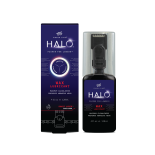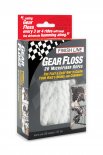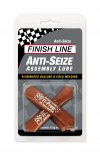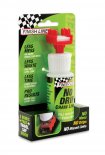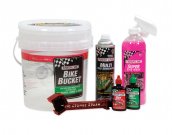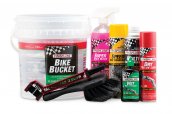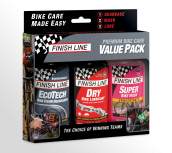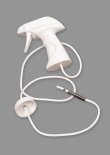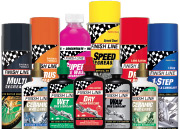Cycling Glossary: The Language of Our Sport
2
27.5 - a mountain bike with wheels that are approximately 27.5 inches in diameter, including a 2-inch-wide tire, and are based on ISO 584 mm (aka 650B) rims.
29er - a mountain bike with wheels that are approximately 29 inches in diameter, including a 2-inch-wide tire, and are based on ISO 622 mm (aka 700C) rims.
A
Abandon - To quit a race
Aero - abbreviation for aerodynamically efficient
Aero Bars - Extension of the handlebars usually allowing the rider to rest his elbows and benefit from improved aerodynamics. Often found on Time Trial and Triathlon bicycles.
Aero Wheels - Bicycle wheels that normally have a deep section rim (30mm+), often made of carbon fiber, and are designed to be fast and more aerodynamically efficient that standard wheels. Newer wheels are designed with a wider rim profile that is more stable in strong cross winds.
All Mountain - Term for a type of mountain bike that normally has 5+ inches of suspension travel and is designed to work well on all parts of a mountain from climbing fire roads to steep downhill descents.
Apex - the middle or sharpest point in a curve or turn
Ardennes - hilly region in Belgium, home to a number of spring classics
Arrivee - French for the Finish Line
Attack - To quickly accelerate while riding in a pack, or in smaller numbers, with a view to create a gap between yourself and other riders
Autobus - A group of riders in a stage race (typically non-climbers and suffering domestiques) who ride together as a group on the mountain stages with the sole intention of finishing within the stage's time limit to allow them to start the next day. Also known by the Italian term gruppetto.
B
Bearing - a machine element that constrains relative motion between two moving parts to only the desired motion. Come in a variety of styles including: cartridge bearing, sealed bearing, needle bearing, and ball bearing.
Bell Lap - If the riders are racing the final meters of a race on a velodrome or on a circuit in a town, a bell is rung at the start of the final lap.
Belt Drive - A bicycle drivetrain that uses a durable belt instead of a metal chain to turn the rear wheel
Beyond Category (Hors Categorie) - The French term primarily used in cycle races (most notably, the Tour de France) to designate a climb that is "beyond categorization", an incredibly tough climb. Most climbs are designated from Category 1 (hardest) to Category 4 (easiest), based on both steepness and length. A climb that is harder than Category 1 is designated as hors catégorie.
Bib Shorts - Bib shorts are cycling shorts that are held up by a bib (integral suspenders/braces) instead of an elastic waistband. Pro and serious riders tend to prefer bib shorts over non-bib shorts, due to the discomfort that often occurs with an elastic waistband, such as tightness (digging into skin) and chafing. The bib part of the short is often made of spandex and polyester with large sections of netting to help keep the rider cool.
Bidon - A water bottle
Big Ring - The bigger of the two chain rings (front gears) on a bike that generates a larger gear. The Big Ring gives the rider the most speed, but is the harder gear to pedal. It is the gear used during a sprint, a flat time trial or a mountain descent.
Bike Porn - pictures of bike or bikes seen in real life that are incredibly expensive and full of rare components. The $18,000 Specialized McLaren S-Works Venge is an example of bike porn.
Blocking - Riders of one team who set a relatively slow tempo at the front of a group to control the speed, often to the advantage of one of their teammates who may be in a break.
Bonk (hit the wall) - To completely run out of energy on a long ride, often caused by poor nutrition.
Bottom bracket - The bearing assembly which allows the crank to rotate relative to the frame. May or may not include the spindle which connects the two arms, depending on the standard to which it was designed.
Braze-ons - threaded attachments welded to the bike from. Normally used to mount brakes, water bottle cages, front derailleurs, or racks.
Breakaway - A group of riders (or solo rider) who have attacked and ridden away from the peloton*. This group of opponents will often work together knowing each has some chance of winning the race.
Broom Wagon - A support vehicle following a group of cyclists in a race, tour or recreational ride that may carry equipment, food, rider luggage, or mechanics. May also pick up riders unable to continue. Also called a SAG wagon.
Bunch Sprint - The riders arrive near the finish in massive numbers to contest the victory and attempt to draft their sprinters in a good position to claim the victory. Speeds higher than 60 km/h are to be expected.
Bunny Hop - To cause one's bicycle to become airborne by lifting the front wheel and then the rear wheel into the air with such timing that both wheels are simultaneously airborne for a period. Bunny hops are performed either to navigate course features, to perform tricks or to avoid obstacles, depending on the discipline of competition.
Butting - a butted tube on a bike frame is one where the outside of the tube is a constant diameter and the wall thickness varies. This is done to make tubes lighter, while keeping them strong.
C
Cadence - The rate at which a cyclist pedals (in revolutions per minute).
Caliper Brakes - a class of cable-actuated brake in which the brake mounts to a single point above the wheel, theoretically allowing the arms to auto-centre on the rim. Arms extend around the tyre and end in brake shoes that press against the rim. While some designs incorporate dual pivot points — the arms pivot on a sub-frame — the entire assembly still mounts to a single point.
Car back - What riders yell when riding in a group when there is a car approaching from the rear. This alerts other riders to a possible danger and tells them to form a single file line to allow the car to pass.
Caravane Publicitaire - The publicity cavalcade where sponsors promote goods and hand out free samples. The Caravan precedes each stage into along the race route, giving sponsors of the Tour de France a chance to advertise.
Carbon Clincher - a type of wheel that is made from carbon fiber (normally with a deeper rim that is 30mm+), with a braketrack that is also made from carbon fiber. This helps to keep the weight down on deep section carbon wheels.
Carbon Fiber - an extremely strong and light fiber-reinforced polymer which contains carbon fibers. The binding polymer is most often epoxy, but other polymers, such as polyester, vinyl ester or nylon, are sometimes used. The composite may contain other fibers, such as aramid e.g. Kevlar, Twaron, aluminium, or glass fibers, as well as carbon fiber. The strongest and most expensive of these additives, carbon nanotubes, are contained in some primarily polymer baseball bats, car parts and even golf clubs where economically viable
Cassette - The rear cog cluster on a derailleur bicycle, that fits on a freehub. It consists only of cogs, with no ratcheting mechanism, as the ratcheting mechanism is in the freehub.
Categorized Climb - In European stage racing it is a designation of the difficulty of a mountain climb. This is a subjective judgment of the difficulty of the ascent, based upon its length, gradient and how late in the stage the climb is to be ridden. A medium difficulty climb that comes after several hard ascents will get a higher rating because the riders will already be tired. The numbering system starts with "4" for the easiest that still rate being called a climb and then with increasing severity they are 3, 2, 1. The most challenging are above categorization, or in the Tour nomenclature, "Hors catégorie", HC. In the Giro the hardest climbs are rated a Category 1.
Century - 100 mile bike ride.
Chain - a roller chain that transfers power from the pedals to the drive-wheel of a bicycle, thus propelling it. Most bicycle chains are made from plain carbon or alloy steel, but some are nickel-plated to prevent rust, or simply for aesthetics.
Chain Catcher (checker) - small device, normally made of metal that attaches to the front derailleur and extends down toward the bottom bracket. It is designed to catch the chain if it falls off the chain rings and make it easier to get the chain back on without getting off the bike.
Chain Cleaner - a device that attaches to a bicycle chain while it is still on the drivetrain. Chain Cleaners normally hold a small amount of degreaser and have rotating brushes that scrub the chain. The chain is cleaned by moving the chain through the chain cleaner, normally by backpedaling.
Chain slap - Annoying slapping of the bike's chain against the chainstays while riding over rough terrain.
Chain stay - the tubes on a bicycle from that connect at the bottom bracket and run directly back towards the hub of the wheel and connect with the seat stays.
Chain suck - The tendency of a chain to stick to chain rings and be sucked up into the bike instead of coming off the chainring. Primarily caused by worn chainrings and rust on small chain rings, under high loads, and in dirty conditions.
Chainring tattoo - the dotted-line scar you get from gouging your shin or calf on a chainring.
Chainring(s) - The front part of the drivetrain where the chain engages. May be composed of one to three gears.
Chainstay - One of the two frame tubes that run horizontally from the bottom bracket shell back to the rear dropouts.
Chase - A group of one or more riders who are ahead of the peloton trying to join the race or stage leader(s). There may be none, one, or many chases at any given point in a race.
Chasing down - Riders do this when a breakaway is up the road but their team is not represented in the lead group.
Chicane - A sequence of tight turns, often s-shaped, usually most important near the finish of a road-race or during a criterium.
Cima Coppi - prize for the first to the top of the highest mountain pass in the Giro d’Italia
Circle of Death - Term originally coined when Henri Desgrange introduced the high mountains to the Tour de France. The stage with the Peyresourde, Aspin, Tourmalet and Aubisque was call the Circle of Death.
Classic (one day race) - A one-day race of great prestige. Some classics date back to the 19th century. These include Milan-San Remo, Gent-Wevelgem, E3 Harelbeke, Tour of Flanders, Paris-Roubaix, Amstel Gold Race, La Fleche Wallonne, Liege-Bastogne-Liege, and il Lombardia.
Cleat - studs or protrusions on the sole of a shoe or an external attachment to a shoe that allows it to clip in securely to pedals.
Climber - A rider who specializes in riding uphill quickly, usually due to having a high power-to-weight ratio.
Clincher - A type of tire that uses a bead around the edge of the tire to attach to the rim of the wheel when inflated. The inner tube is separate.
Clipless Pedals - require a special cycling shoe with a cleat fitted to the sole, which locks into a mechanism in the pedal and thus holds the shoe firmly to the pedal. Most clipless pedals lock onto the cleat when stepped on firmly and unlock when the heel is twisted outward, although in some cases the locking mechanism is built into the cleat instead of the pedal. Clipless refers to the toe clip (cage) having been replaced by a locking mechanism and not to platform pedals which would normally not have toe clips. The clipless pedal was invented by Charles Hanson in 1895.
Coaster Brakes - also known as a back pedal brake or foot brake (contra or torpedo in some countries), is a type of drum brake integrated into hubs with an internal freewheel. Freewheeling functions as with other systems, but when back pedaled, the brake engages after a fraction of a revolution. The coaster brake can be found in both single-speed and internally geared hubs.
Cog - A dented gear that is part of the cassette.
Col - A mountain pass
Commissaire - A race judge, in road-racing they are usually based in a car following the event.
Components - the moving parts of a bike that are attached to the frame
Counterattack - An attack that is made when a break has been caught by chasers or the peloton.
Crack - When a cyclist runs out of strength or energy, they are said to have cracked. Compare with hit the wall.
Crank arm - One of the two arms of a crankset. Each arm connects a pedal to the bottom bracket.
Crankset (chainset) - The bicycle drivetrain assembly that converts the rider's pedaling action to rotating motion. It consists of two cranks (or arms), one or more chainwheels (or chainrings), plus the stack bolts that connect them. Sometimes the bottom bracket is included.
Criterium - A race on a closed short distance course with multiple laps. Often but not always a 4-cornered course; often includes primes (short for premiums and rhymes with 'seems') which are points or prizes for intermediate laps. Course length varies from 800 meters to 5 kilometers.
Crono - short for time trial.
Cross chained - when you are on the big ring in the front and small ring on the back or small ring on the front and big ring on the back. The extremely chainline can cause premature wear or even cause the chain to drop.
Cross Country - is the most common discipline of mountain biking. While less publicized than downhill cycling as it is more difficult to televise, it garners the highest levels of participation both recreationally and competitively. Cross-country cycling became an Olympic sport in 1996 and is the only form of mountain biking practiced at the Olympics.
Cyclocross - A form of bicycle racing that consists of many laps of a short course featuring pavement, wooded trails, grass, steep hills and obstacles requiring the rider to quickly dismount, carry the bike past some obstacles and remount.
D
Degreaser - Chemical product that dissolves water-insoluble substances (such as greases and oils) from hard surfaces such as floor, machines, tools.
Di2 - Digital Integrated Intelligence. The Shimano acronym for their electronic groupsets.
Directeur sportif - Team manager. During a race, the Directeur Sportif will ride in one of the cars behind the peloton and directs the action of his team through race radios
Disc wheel - Disc wheels are designed to minimize aerodynamic drag. A full disc is usually heavier than traditional spoke wheels, and can be difficult to handle when ridden with a cross wind. For this reason, international cycling organizations often ban disc wheels or limit their use to the rear wheel of a bicycle. However, international triathlon federations were (and are still) less restrictive and is what led to the wheels' initial usage growth in popularity in the 1980s.
DNF - did not finish. Abbreviation used in race results.
DNS - did not start. Abbreviation used in race results
Domestique - A rider whose job it is to support and work for other riders in their team (literally "servant" in French). Today the term has lost its bad connotation and serves as an acknowledgement of the true nature of racing tactics.
Dossard - French for race or bib number worn by cyclists
Downhill - is a time trial event held on a steep, rough terrain that often features jumps, rock gardens and other obstacles. Downhill bikes are heavy, strong, and feature front and rear suspension with over 8 inches (20 cm) of travel, to glide quickly over rocks and tree roots. A continuous course is defined on each side by a strip of tape. Riders have a single attempt to reach the finish line as fast as possible, while remaining between the two tapes designating the course. Riders musts choose their line by compromising between the shortest possible line and the line that can be travelled at the highest speed. If a rider leaves the course by crossing or breaking the tape they must return to the course at the point of exit, unless they do not gain a time advantage form crossing the tape, in which case they can continue with their run. Riders start at intervals, often seeded from slowest to fastest. Courses typically take two to five minutes to complete and winning margins are often less than a second. Riders are timed with equipment similar to that used in Downhill skiing.
Drafting - To ride closely behind another rider to make maximum use of their slipstream, reducing wind resistance and effort required to ride at the same speed.
Drop - To be dropped is to be left behind a breakaway or the peloton for whatever reason (usually because the rider cannot sustain the tempo required to stay with the group). To drop someone is to accelerate strongly with the intent of causing following riders to no longer gain the benefit of drafting.
Dropouts - the slots on the frame that accept the wheel axle
E
Echelon - a line of riders seeking maximum drafting in a crosswind, resulting in a diagonal line across the road.
Electronic Shifting - these are groupsets where all shifts are done with the push of a button that actuates small motors in the front and rear derailleurs instead of pulling a cable.
Endo - An Endo (short for end-over-end), is when the back wheel of the bike is lifted off the ground and the bike goes up onto its front wheel only. It can also be used to designate a crash that is similar to an unintended front flip.
EPS - Abbreviation for Electronic Power Shift. This is the term used by Campagnolo for all of their electronic groupsets
Etape - A stage of a stage race.
Etape de Tour - an event held every year that allows non professional riders the chance to ride one of the stages of the Tour de France. Usually occurs a few days before the actual stage takes place.
F
False flat - A low-gradient climb, usually occurring partway up a steeper climb. So-called because while it may look deceptively flat and easy (especially after the steep climb preceding it), it is still a climb.
Fast finisher (see sprinter) - A rider who has superior sprinting speed over the last few hundred meters of a race.
Feed zone - In road bicycle racing, a location along the course of a long race where team personnel hand musettes containing food and beverages to passing riders. In mountain bicycle racing, a limited section of the course in which riders may accept food from non-racing assistants. Sometimes this is combined with the technical assistance zone if one exists
Field - A group of rider, also known as a peloton.
Finish Line - 1. A marked area that designates the official end to a race, often depicted by a checkered flag. 2. The name of an American company, founded in 1988, for the purpose of making bicycle-specific lubricants and related bicycle-care products.
Fixed - Slang for a fixed-gear bicycle.
Fixie - Slang for a fixed-gear bicycle.
Flamme rouge - A red flag displayed with one kilometre remaining from the finish line of a race. Usually suspended over the road.
Follow a wheel - The ability to follow a wheel is the ability to match the pace of riders who are setting the tempo. Following is easier than pulling or setting the tempo and the term can be used in a derogatory manner, e.g. "He only ever followed".
Fork - Part of the frameset that holds the front wheel. Can be equipped with a suspension on mountain bikes.
Fork - The part of the frame set that holds the front wheel. It is usually refers to the front fork, the fork is attached to the main frame by the headset. The fork consists of the two blades that go down to hold the axle (the fork crown and the steerer). The term "rear fork" is sometimes used to refer to the part of the frame that holds the rear wheel.
Frame - the main component of a bicycle. Consist of a top tube, head tube, seat tube, down tube, chain stays, and seat stays. Frames are required to be strong, stiff and light, which they do by combining different materials and shapes.
Frameset - The bicycle frame plus the front fork.
Freewheel - consists of either a single sprocket or a set of sprockets mounted on a body which contains an internal ratcheting mechanism and mounts on a threaded hub. This allow the cyclist to increase speed when pedaling, but also allow the cyclist to stop pedaling and coast.
Front Derailleur - Responsible for changing gears on the crankset. The front derailleur only has to move the chain side to side between the front chainrings, but it has to do this with the top, taut portion of the chain. It also needs to accommodate large differences in chainring size: from as many as 53 teeth to as few as 20 teeth.
Full suspension - a bicycle with suspension in the fork and also on the rear of the frame.
G
G.C. - Abbr.: general classification. the timing splits used to determine who is winning in a stage race. Calculated from the first rider over the line each day time is then measured back by gaps from the winner of the day. Time gaps are then calculated back between riders and added to the overall position of riders relative to each other. Riders can attack in stage races for time rather than winning the days stage. They are said to be "riding for G.C.". In such circumstances alliances can form where some riders in a breakaway will work to help others win the days stage despite not contesting the finish as the overall gap the breakaway gains helps them "on G.C."
Gap - A distance between two or more riders large enough for drafting to no longer be effective. Also used as verb (US English), for example: "Froome has gapped Contador!". It's much easier for a stronger rider to pull ahead of others once a gap has been achieved; without a gap, the others can draft along using significantly less power to sustain the same speed as the rider in front. While gaps are usually achieved through attacks, on mountain climbs, where slower speeds means the advantage of drafting is much less significant, riders are often gapped who simply cannot maintain the tempo of the faster riders. A gap can also refer to the space in between a jump and the landing, which is common in mountain biking.
General Classification - Abbr.: G.C. the timing splits used to determine who is winning in a stage race. Calculated from the first rider over the line each day time is then measured back by gaps from the winner of the day. Time gaps are then calculated back between riders and added to the overall position of riders relative to each other. Riders can attack in stage races for time rather than winning the days stage. They are said to be "riding for G.C.". In such circumstances alliances can form where some riders in a breakaway will work to help others win the days stage despite not contesting the finish as the overall gap the breakaway gains helps them "on G.C."
Gilet - sleeveless jacket or vest worn by cyclists as the temperature drops, but it is not cold enough for a full jacket.
Grand Boucle - The big loop, a French term referring to the Tour (loop) around France.
Grand Depart - The start of the Tour de France. Often times the race begins with a Prologue, but often it is a flat stage for the sprinters.
Grand Tour - refers to one of the three major European professional cycling stage races: Tour de France, Giro d'Italia and Vuelta a España. Collectively they are termed the Grand Tours, and all three races are similar in format being multi-week races with daily stages. They have a special status in the UCI regulations: more points for the UCI World Tour are distributed in Grand Tours than in other races, and they are the only stage races allowed to last longer than 14 days.
Granny gear - either the lowest gear ratio on a multi-speed derailleur bicycle; smallest chainring in front and the largest at the back or the smallest chainring on a crank with triple chainrings
Grease - a semisolid lubricant. It generally consists of a soap emulsified with mineral or vegetable oil. The characteristic feature of greases is that they possess a high initial viscosity, which upon the application of shear, drops to give the effect of an oil-lubricated bearing of approximately the same viscosity as the base oil used in the grease. This change in viscosity is called thixotropy. Grease is sometimes used to describe lubricating materials that are simply soft solids or high viscosity liquids, but these materials do not exhibit the shear-thinning (thixotropic) properties characteristic of the classical grease. For example, petroleum jellies such as Vaseline are not generally classified as greases.
Green Jersey - Also known as the sprinters jersey or maillot vert, is worn by the leader of the points classification at the Tour de France
Groupset - the drivetrain of the bicycle that includes the crankset, chain, cassette, front derailleur, rear derailleur, shift levers, brake levers, and brakes.
Gruppetto (autobus) - A group of riders in a stage race (typically non-climbers and suffering domestiques) who ride together as a group on the mountain stages with the sole intention of finishing within the stage's time limit to allow them to start the next day. Also known by the Italian term gruppetto.
H
Hammer - To ride fast. Most often hammering is used to describe what someone does when they want to drop another rider or catch a breakaway.
Handlebar - the steering mechanism for bicycles; the equivalent of a steering wheel. Besides steering, handlebars also often support a portion of the rider's weight, depending on their riding position, and provide a convenient mounting place for brake levers, shift levers, cyclocomputers, bells, etc. Handlebars are attached to a bike's stem which in turn attaches to the fork.
Hardcore - parcour
Hardtail - A bicycle that does not have a rear suspension system.
Headset - The bearing system in the head tube within which the handlebars rotate.
Helmet - a form of protective gear worn to protect the head from injuries.
Hilltop finish - When a race ends at the top of a mountain, the rider with the greater climbing skills has the advantage. It used to be that the finish line was far from the last climb, allowing the bigger, more powerful riders to use their weight and strength to close the gap to the climbers on the descents and flats. The Tour introduced hilltop finishes in 1952 and did it with a vengeance ending stages at the top of L'Alpe d'Huez, Sestrieres and Puy de Dôme. In order to reduce Anquetil's advantage in the time trials and flatter stages the 1963 Tour moved the finish lines closer to the last climbs of the day, further helping the purer climbers.
Hit the wall (see bonking) - To completely run out of energy on a long ride, also known as "bonking".
Hors delai (HD, Ted King) - French for "out of time", when a rider has finished outside the time limit in a race and is eliminated.
Hub - A hub is the center part of a bicycle wheel. It consists of an axle, bearings and a hub shell. The hub shell typically has two machined metal flanges to which spokes can be attached. Hub shells can be one-piece with press-in cartridge or free bearings or, in the case of older designs, the flanges may be affixed to a separate hub shell.
Hybrid - A bicycle that is a compromise between a road bike and a mountain bike. Often chosen by cyclists for its comfort. Many use this type of bike for commuting because it is easy to add mudguards and a rack
Hydraulic Disc Brakes - braking mechanism which uses brake fluid, typically containing ethylene glycol, to transfer pressure from the controlling mechanism to the braking mechanism. Consists of a metal disc attached to the wheel hub that rotates with the wheel. Calipers are attached to the frame or fork along with pads that squeeze together on the disc. As the pads drag against the disc, the wheel - and thus the bicycle - is slowed as kinetic energy (motion) is transformed into thermal energy (heat).
I
IBD - Independent Bicycle Dealer
Individual Time Trial - Race where riders set off at fixed intervals and complete the course against the clock.
Intermediate sprint - To keep a race or a tour active there may be points along the course where the riders will sprint for time bonuses or other prizes.
Intermediate Sprint - To keep the race active there may be points along the race course where the riders will sprint for time bonuses or other prizes (premiums, or "preems"). Sometimes called "Hot Spots".
Internal Hub Gearing - a gear ratio changing system commonly used on bicycles that is implemented with planetary or epicyclic gears. The gears and lubricants are sealed within the shell of the hub gear, in contrast with derailleur gears where the gears and mechanism are exposed to the elements. Changing the gear ratio was traditionally accomplished by a shift lever connected to the hub with a Bowden cable, and twist-grip style shifters have become common.
Ironman - a long distance triathlon that includes a 2.4 mile swim, 112 mile bike ride, and 26.2 mile run. The championships are held every October in Kona, Hawaii and entry is by qualification. Run by the World Triathlon Corporation (WTC).
J
Jump - To aggressively increase speed without warning, hopefully creating a substantial advantage over your opponents. Also (more usually) denoting an attempt to bridge a gap from the peloton or gruppetto to a breakaway. For example: "he is trying to jump across".
K
Kick - Accelerating quickly with a few pedal strokes in an effort to break away from other riders (e.g. "Sagan kicks again to try to rid himself of Frank")
King of the Mountains (KOM) - In 1933 the Tour de France started awarding points for the first riders over certain hard climbs, the winner of the competition being the King of the Mountains. In 1975 the Tour started awarding the distinctive polka-dot jersey or maillot a pois to the leader of the classification. The first rider to wear the dots was the Dutch racer Joop Zoetemelk. The classification has lost some of its magic in recent years because of the tactics riders use to win it. Today a rider wishing to win the KOM intentionally loses a large amount of time in the General Classification. Then when the high mountains are climbed the aspiring King can take off on long breakaways to be first over the mountains without triggering a panicked chase by the Tour GC contenders.
Kit - all of the clothing and accessories someone wears on a bike. Someone’s cycling kit.
L
Lantern Rouge - French for red lantern, as in what hangs off the back of a train. In the Tour de France, it refers to the rider who is the lowest on general (overall) classification.
Lanterne Rouge - French for "red lantern", as found at the end of a railway train, and the name given to the rider placed last in a race.
LBS - Local Bike shop
Lead out - Sprinting technique often used by the lead out man where the rider will accelerate to maximum speed close to the sprint point with a teammate, the sprinter, drafting behind, hoping to create space between the sprinter and the pack. When the lead out man is exhausted he will move to the side to allow his teammate to race in the sprint. Often a line of lead out men will be used to form a lead out train to drive the speed higher and higher (and to reduce the chances of other riders attacking) over the closing stages of a race. The purpose of a lead out is for the sprinter to achieve high speed at the sprint approach using as little of his own energy as possible, so he has as much energy as possible for the final sprint.
Leadout Man - The top domestique responsible for bringing a sprinter within meters of the race finish line, sheltering him from the wind until the final seconds of a race. Top sprinters will often take a trusted lead-out man to a new team as part of their contract
Lubricant - a substance introduced to reduce friction between moving surfaces. It may also have the function of transporting foreign particles. The property of reducing friction is known as lubricity. Bicycles require specific lubricant that is applied to the chain, derailleurs, and any pivot points on the bike.
Lug - metal reinforced piece into which the tubing for road bikes is brazed, allowing for lighter tubing.
M
Maillot Jaune - French for Yellow Jersey. The jersey worn by the leader of the general classification at the Tour de France.
MAMIL - Abbreviation of middle-aged men in lycra, a popular bicycle buying demographic for high-end bicycles.
Manual - Lifting the front wheel off the ground by the shifting of the rider's weight.
Mechanical - A problem with the function of a racer's bicycle, usually not a flat tire. Because rules have sometimes been in place that prevent rider's changing bikes unless a mechanical problem is present mechanics have manufactured mechanicals. In the 1963 Tour de France Anquetil's manager Géminiani cut one of Anquetil's gear cables so that he could give him a lighter bike to ascend the Forclaz.
Metric Century - 100km or 62 mile bike ride
Minute man - The cyclist starting in a time trial either a minute ahead or behind another rider.
Monocoque - a structural approach that supports loads through an object's external skin, similar to a pingpong ball or egg shell. This is also a term used to describe the construction of some carbon fiber bicycle frames that are manufactured in a single piece and have no internal structure.
Mudguards - fenders for bicycles that can be fitted to most bicycle frames. These catch and redirect road spray thrown up by the tires, allowing the rider to remain relatively clean.
Mur - Wall, Steep climb
Musette - Small lightweight cotton shoulder bag, used for containing food and drink given to riders in a feed zone during a cycle race. The bag is designed so that it can be easily grabbed by a moving rider. The shoulder strap is placed over the head and one shoulder, the contents are then removed and placed into jersey pockets or bottles (bidons) are placed into bottle cages. The bag is then discarded.
N
Nature break - With stages and racing sometimes taking six or more hours, riders will sometimes dismount to use the restroom. Many times this is organized with an understanding that the peloton will not attack those stopping to answer the call of nature.
Neo-pro - A first year professional.
Neutral Service Car - This car will give any rider a spare bike or wheel if his own team car is not nearby. This car usually follows the early part of a breakaway and services riders until their team car arrives.
Nipple - a headed cylinder with threading on the inside through part of its length that holds a bicycle rim to each spoke.
O
Off the back - Getting dropped from the group/peloton.
Off the back - Riders who have been dropped by the main group (the peloton).
Omloop - circuit or race
On the rivet - A rider who is riding at maximum speed. When riding at maximum power output, a road racer often perches on the front tip of the saddle (seat), where the shell of an old-style leather saddle would be attached to the saddle frame with a rivet.
P
Paceline - Group of riders riding at high speed by drafting one another. Riders will take turns at the front to break the wind, then rotate to the back of the line to rest in the draft. Larger group rides will often form double pacelines with two columns of riders. Sometimes referred to as "bit and bit".
Palmares - A list of races a rider has won. (French, meaning list of achievements or list of winners).
Pannier - A basket, bag, box, or similar container, carried in pairs attached to the frame, handle bars, or on racks attached above the wheels of a bicycle. Panniers are used by commuters and touring cyclists in the same way hikers and campers use backpacks, as a means to pack and carry gear, clothing and other supplies and items. The term derives from the Old French, from Classical Latin, word for bread basket.
Parcours - The profile of the race or stage route.
Pave - cobbles
Pedals - part of a bicycle that the rider pushes with their foot to propel the bicycle. It provides the connection between the cyclist's foot or shoe and the crank allowing the leg to turn the bottom bracket spindle and propel the bicycle's wheels. Pedals usually consist of a spindle that threads into the end of the crank and a body, on which the foot rests or is attached, that is free to rotate on bearings with respect to the spindle.
Peloton - (from French, literally meaning little ball or platoon and also related to the English word pellet) is the large main group in a road bicycle race. May also be called the field, bunch, or pack. Riders in a group save energy by riding close (drafting or slipstreaming) near and, particularly behind, other riders. The reduction in drag is dramatic; in the middle of a well-developed group it can be as much as 40%.
Pink Jersey - Also known as the Maglia Rosa, the Pink Jersey is worn by the best placed rider in the General Classification at the Giro d’Italia.
Points - The usual meaning is the accumulation of placings in each stage. Today the Tour gives more points to the flatter stages so the the winner of the points competition is a more likely to be sprinter. See General Classification. In the Tour the Points leader wears a green jersey, in the Giro he dons a purple jersey.
Polka Dot Jersey - The jersey worn by the leader of the mountains classification at the Tour de France
Poursuivant - From French, literally "pursuing" - refers to a cyclist or group of cyclists who are separated from and behind the leader(s) (tête de la course) but in front of the main group (peloton). This usually occurs when a small number of riders attempt to catch up to the leaders, either to join with them or to "bring them back to the pack" by encouraging the main group to chase them down.
Power Meter - a device on a bicycle that measures the power output of the rider. Most cycling power meters use strain gauges to measure torque applied, and, combined with angular velocity, calculate power. The technology was adapted to cycling in the late 1980s and was tested in professional bicycle racing i.e.: the prototype Power Pacer (Team Strawberry) and by Greg LeMond with the SRM device. This type of power meter has been commercially available since 1989. Power meters using strain gauges are mounted in the bottom bracket, rear freehub, or crankset. Certain newer devices do not use strain gauges and instead measure power through handlebar-mounted units that utilize the principles of Newton's Third Law by measuring a cyclist's opposing forces (gravity, wind resistance, inertia, rolling resistance) and combining these with velocity to determine the rider's power output.
Presta Valve - a valve commonly found in high pressure bicycle tubes. It compromises an outer valve tem and an inner valve body. A lock nut to secure the stem at the wheel and a valve cap may also be present.
Prologue - An individual time trial of usually less than 8 km (5 mi) before a stage race, used to determine which rider wears the leader's jersey on the first stage.
Pull - To take the lead on a paceline or echelon.
Pure sprinter - Also known as old school sprinter. A rider who excels primarily in sprint finishes on flat to mildly uphill terrain. Often too heavy to compete in longer or steeper uphill courses.
Q
Queen stage - The stage of a multi-day road race which includes the highest point reach of the whole race. Also usually, but not always, the hardest stage of the race.
Quick Link - A link for a bicycle chain produced by SRAM. This link is easy to install and remove by hand, eliminating the need for a chain tool. Quick Links make it easy to remove the chain for cleaning.
Quick Release - bolts with levers attached for easy adjustment and removal of wheels
R
Rack - a device attached to a bicycle to which cargo or panniers can be attached. This is popular with utility bicycles and touring bicycles.
Rainbow Jersey - The reigning world champion in a particular cycling event gets to wear a white jersey with rainbow stripes. The championships for most important events are held in the Fall. A former World Champion gets to wear a jersey with rainbow trim on his sleeves and collar. If a World Champion becomes the leader of the Tour, Giro or Vuelta he will trade his Rainbow Jersey for the Leader's Jersey.
Rake - the amount, in degrees, that a front cork curves from the line drown down the stem or steerer tube.
Rear Derailleur - Responsible for changing gears on the cassette. The rear derailleur serves double duty: moving the chain between rear sprockets and taking up chain slack caused by moving to a smaller sprocket at the rear or a smaller chainring by the front derailleur. In order to accomplish this second task, it is positioned in the path of the bottom, slack portion of chain. Sometimes the rear-derailleurs are re-purposed as chain tensioners for single-speed bicycles that cannot adjust chain tension by a different method.
Red Bull Rampage - The Red Bull Rampage is an invite-only freeride/downhill mountain bike competition held near Zion National Park in Virgin, Utah, USA, just to the north of Gooseberry Mesa. Previously it was held off the Kolob Terrace Road, on the western boundary of Zion National Park. The competition was held from 2001–2004 and then canceled due to the increasing risk competitors were taking. The Rampage however was re-introduced for the 2008 season. In 2010, the event was held October 1–3.Since then Red Bull rampage has become one of the biggest mountain biking events of the year.
Red Jersey - The Red Jersey is worn by the best placed rider in the General Classification at the Vuelta a Espana
Rigid - A bicycle without any suspension system.
Rim - commonly a metal extrusion that is butted into itself to form a hoop. Comes in a variety of materials including: aluminum, magnesium, carbon, and bamboo.
Road race - A race on pavement. Longer in distance than criteriums.
Road rash - Severe skin abrasions caused from sliding on the asphalt in a crash.
Roadie - someone who rides road bikes
Rollers - A type of trainer composed of rolling cylinders under the rear wheel linked to a single rolling cylinder under the front wheel which allow the rider to practice balance while training indoors.
Rouleur - A rider who is strong on flat and undulating roads. The rider is well suited for races such as Paris–Roubaix and the Tour of Flanders. Tom Boonen and Fabian Cancellara are examples of this.
Rule #5 - HTFU (http://www.velominati.com/the-rules/)
Rutkowski - noun: A spectacular bicycle accident, usually involving an immovable object such as a tree, lamppost, or cactus. Ex: When I rode off that cliff and saw the 12' cactus, I knew it would be a bad Rutkowski." verb: to crash a bicycle in a manner that would make Wyle E. Coyote cringe. Ex: "I Rutkowskied so bad this weekend I needed 417 stitches"
S
Saddle - Bike seat.
SAG Wagon (see broom wagon) - A broom wagon. SAG is an acronym for "support and gear" or "support and grub".
Same time (@) - In English language race results an asperand (or "at" sign) is used to denote the amount of time or number of points behind the winner. In the example below Luis Ocana won the race, taking 6 hours, 51 minutes, 15 seconds to complete the course. Joop Zoetemelk was behind him and crossed the finish line 15 seconds later. Pollentier was still further behind and crossed the line 3 minutes and 34 seconds after Ocana. Van Impe and Thévenet were with Pollentier but slightly behind him. The "s.t." means that they were given the same time as Pollentier. If a rider finishes close enough to a rider who is in front of him so that there is no real gap, he will be given the same time as the first rider of that group. French or Spanish results will use often use "m.t." to denote same time. If no time is given, same time is assumed.
Seat Stay - the tube on a bicycle frame that connect near the seat tube and top tube and run down towards the hub of the wheel and connect with the chain stays.
Seatpost - a tube that extends upwards from the bicycle frame to the saddle. The amount that it extends out of the frame can usually be adjusted, and there is usually a mark that indicates the minimum insertion (or maximum extension). Seatposts can be made of steel, aluminum, titanium, carbon fiber, or aluminum wrapped in carbon fiber.
Service course - A command center where bicycles are maintained between races in preparation for the next race, a service course car is a car (such as those famously provided by Mavic) that carry spare bicycles or wheels in a race should the competing cyclist require it.
Shifter - A component used by the rider to control the gearing mechanisms and select the desired gear ratio. It is usually connected to the derailleur by a mechanical actuation cable. Electronic shifting systems also exist.
Shraeder Valve - brand of pneumatic tire valve used on cars, bicycle, motorcycles, etc… Consists of a valve stem into which a valve core is threaded.
Soigneur - A non-riding member of a team whose role is to provide support for the riders, possibly including transportation and organization of supplies, preparation of the team's food, post-ride massages and personal encouragement.
Souvenir Henri Desgrange - the prize given to the rider to the top of the highest mountain pass in the Tour de France.
SPD - Type of cleat produced by shimano. Uses two screws to attach and is the primary type of cleat used by mountain bikers
SPD-SL - Type of cleat produced by shimano that utilizes three bolts to attach the cleat to the show. Common for road cyclists.
Spoke - one of some number of rods radiating from the center of a wheel connecting the hub with the rim.
Sprinter - Rider with the ability to generate very high power over short periods (a few seconds to a minute) allowing for great finishing speeds, but usually unable to sustain sufficiently high power over long periods to be a good time triallist, and is usually too big to have a high enough power-to-weight ratio to be a good climber.
Stage - One part of a multi-day race, such as the Tour de France.
Stage Race - A multi day cycling race that consists of different stages. Can be as short as two days and as long as three weeks. These races often include different types of stages including flat, medium mountain, high mountain, time trial, and team time trial stages.
Stagiaire - An amateur rider, who is taken in by a professional team during the season. This lets the rider get some experience at riding a few pro races, and the team gets a chance to assess the abilities of the rider.
Stanchion - The two upper members of the bicycle fork that connect to the crown (also called fork legs).
Steerer tube - The part of the fork that is inserted into the head tube of the frame, and is used to attach the fork to the frame using a headset.
Stem - The component that attaches the handlebars to the steer tube of the bicycle. They come in two major types, quill and threadless. The angle and length plays a major part in how the bicycle fits the rider.
Sticky bottle - A technique often used by the rider who takes food and water from the team car during a race. The rider holds on for a variable amount of time to the bottle handed to him by the car occupant, who maintains his grasp on the object, effectively dragging the athlete. This concerted act gives the cyclist a moment to relax. Usually tolerated by the race commissaire if the bottle is held for 1-2 second, but may result in a sanction if an exaggeration is perceived.
Stiction - static friction or the friction that must be overcome for something to start moving
Swag - Promotional items often given away for free at cycling events. Also spelled "schwag", "shwag".
Switchback - In order to reduce the gradient of a mountain ascent the road engineer has the road go back and forth across the hill. The Stelvio climb is famous for its 48 switchbacks as is L'Alpe d'Huez for its 21. In Italian the term is Tornante.
T
Table Top - a jump made over a hill with a flat top where the main goal is to launch yourself over the flat section before landing on another ramp
Team time trial - Riders start in groups or teams, usually of a fixed size. The time of the nth rider of a team counts for the classification for each team member. In the 2009 edition of Tour de France, riders who are dropped from their team's group would be scored with their own time, instead of the team time.
Technical - A trail or patch of road that requires good balance and concentration since it is very uneven. Can also be said of a bend or a series of bends.
Tempo - Steady pace at the front of a group of riders. A relatively fast tempo can be used by a group or team to control the peloton, often to make up time to a break. The group will ride at the head of the bunch and set a fast enough pace to stretch the peloton out (also known as stringing out) and discourage other riders from attacking. Setting a slower tempo can be done for the purpose of blocking. A tempo is also a type of track race where two points are awarded to the first person to cross the line each lap, and one point is awarded to the second person to cross the line each lap. The winner is the person with the most points at the end of the race.
Tete de la course - From French, literally "head of the race" - the leading cyclist or group of cyclists, when separated from (in front of) the peloton.
Tifosi - The word commonly refers to fans along the roadside at professional road cycling races in Italy such as Tirreno–Adriatico, Milan – San Remo, the Giro d'Italia, and the Giro di Lombardia.
Time Bonus - Time bonus (actually time subtracted) awarded to a rider. Stage races vary and the Tour is always tinkering with its rules. Bonifications can be earned several ways: winning or placing in a stage, winning or placing in an intermediate sprint, being among the first riders over a rated climb. The rules have changed over the years. At one time in the early 1930's the Tour awarded a 4-minute time bonus for winning a stage. In 2005 the bonification was 20 seconds.
Time trial - A race against the clock where riders are started separately (ranging from 30 seconds to 5 minutes apart). The winner of the race is determined by the fastest person across the course. No drafting may be employed in a time trial as it is a solo race event.
Toe Clips - a thin metal or plastic attachment to the front cage of the pedal. The toe clip is shaped like the toe of a shoes and its function is to prevent a cyclist’s shoe from slipping off the pedal during forward pedaling motion.
Track Stand - a maneuver where the rider stops the bike and remains standing without putting a foot on the ground
Trade Team - A team sponsored by a commercial entity. Until the mid-1950s, cycle team sponsorship was limited to companies within the bicycle industry. That changed in 1954 when Fiorenzo Magni's bicycle manufacturer fell into financial difficulty. Magni was able to supplement the shortfall by getting the Nivea cosmetic company to sponsor his team. The move was initially resisted but it is now the standard. Bicycle companies do not have the monetary resources to finance big-time racing teams. Because the Tour organization suspected collusion between the various trade teams the Tour banished them from 1930 to 1961, and 1967 and 1968. During those years the teams were organized under a national and regional team format. Riders rode for their country, such as France or Italy, or if need be to fill out the race's roster, regions such as Ile de France.
Train (sprint train) - a method in stage races to get a sprinter to the front of a bunch sprint and launched. The sprinter's team riders will form a line, usually within 5k of the finish and take turns to build up speed - the last rider in the train will be protected (drafting) until a short distance from the finish. Perfected by HTC and Mark Cavendish.
Trainer (turbo trainer) - A piece of equipment that a bicycle stands on so that the rear wheel can spin while the bicycle is stationary, allowing stationary riding. These are usually used when the conditions outside are bad.
Triathlon - a type of race that involves three sports. Typically swimming, biking, and running. These range in distance from super sprints that most people complete in less than an hour, to Ironman distance triathlon (2.4 mile swim, 112 mile bike, 26.2 mile run) that have a 17 hour time limit.
Tubular tires - Tubular tyres are cycle tyres that have the inner tube permanently stitched inside the casing. They are held in place using glue or glue-tape, and are affixed to rims which lack the sidewalls characteristic of a hook-bead rim. Tubulars take very high pressure (up to 10 bar or 145 psi, or higher for racing and track-specific tires) which reduces their rolling resistance. They typically result in wheelsets that are lower in overall weight than comparable clincher wheels, because of the shape of the rim, the tire construction, and the lack of rim strips. Tubulars can be ridden at lower pressures than clinchers without the risk of pinch flats, because of the shape of the rim. This makes them well-suited to cyclo-cross, especially in muddy conditions where low tire pressures are used. However, they are difficult to replace and repair and are generally more expensive than clinchers. Also called sew-ups, tubies, or tub.
Turn - A turn is a rider sharing the workload on a pace line "he took a turn" or "he is doing a lot of turns on the front". Missing turns can be expressed thus "he has missed a few turns now and has stopped working". In a breakaway the riders expect to share the work equally in "turns". A rider who doesn't take his turn is "sitting on the break".
U
UCI - The governing world body of cycling. Union Cycliste Internationale
USADA - United States Anti Doping Agency. The agency in charge of doping controls in the United States.
V
V Brakes - Also called linear-pull or direct-pull brakes are a side-pull version of cantilever brakes mounted on the same from bosses. However, the arms are longer, with the cable housing attached to one arm and the able to another.
Velodrome - A cycling track for races.
W
WADA - World Anti-Doping Agency. The agency in charge of monitoring doping in modern sports.
Wall - A steep incline along a race's course.
Weight Weenie - a bicycle enthusiast who is purely focused on making his bike as light as possible.
Wheelie - Lifting the front wheel of the bicycle in the air - through force transmitted through the pedals - whilst riding and continuing to ride on only the back wheel. The rider maintains the wheelie by applying pedal strokes and rear brake in order to balance the bicycle on only the rear wheel.
Wheelsucker - A rider who sits on the rear wheel of others in a group or on another rider, enjoying the draft but not working. Also leech, leeching.
White Jersey - The jersey worn by the leader of the young riders classification at the Tour de France
Y
Yard sale - A crash causing every piece of gear to be scattered all over the place, like bottles, multi-tools, energy bars, hand pump, etc. The resulting scene is reminiscent of a yard sale.





